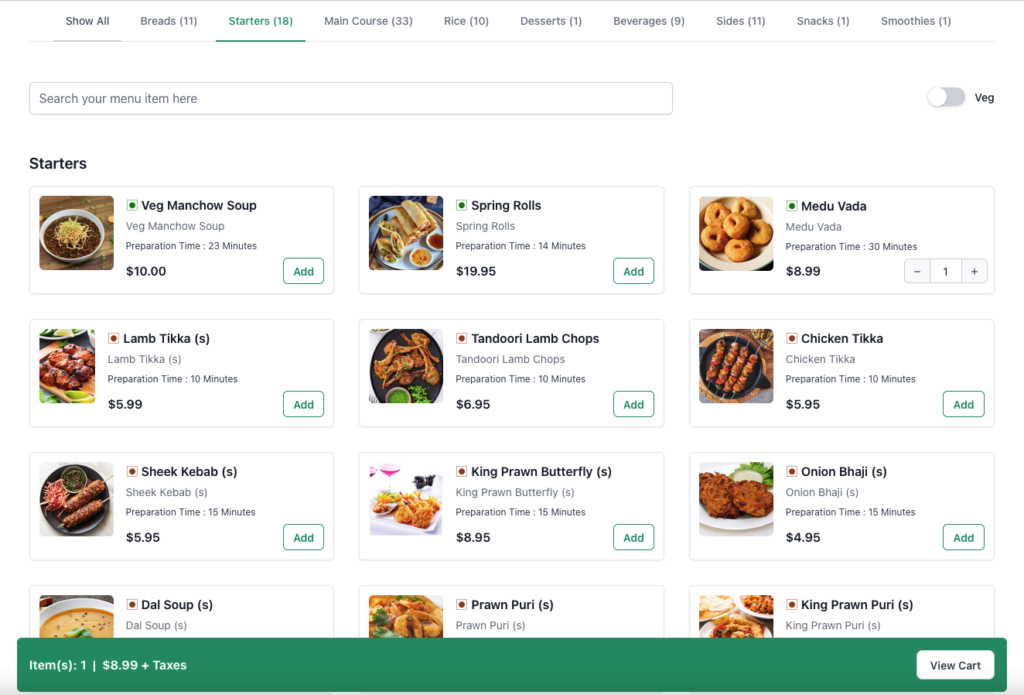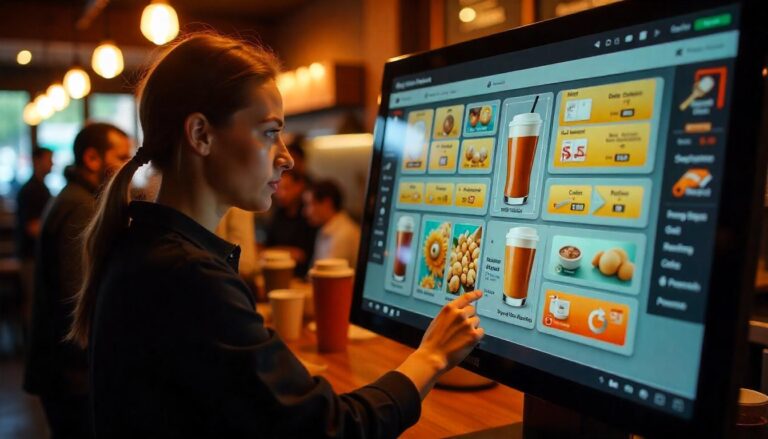Managing restaurant inventory can be challenging. Efficient software makes this task easier.
Discovering the best restaurant inventory management software can transform how you handle stock, orders, and waste. Every restaurant owner knows that inventory management is vital for success. Software solutions streamline this process, reducing human error and saving time. They help track stock levels, manage suppliers, and analyze data to improve efficiency.
With the right tools, restaurant managers can make informed decisions that enhance business operations. Find out how these solutions can simplify your inventory tasks and boost your restaurant’s performance. Let’s explore the top software options that cater to different needs, ensuring your restaurant runs smoothly and effectively.
Introduction To Inventory Management Software
Managing a restaurant is a complex task, and keeping track of inventory can be a nightmare. Inventory management software offers a solution by helping you manage supplies efficiently and avoid costly mistakes. With the right tool, you can streamline operations and focus on what truly matters—delivering great food and service.
Importance For Restaurants
Imagine running out of a key ingredient during peak hours. It’s a scenario every restaurateur dreads. Inventory management software minimizes such risks by keeping track of stock levels in real-time. This tool aids in reducing waste, optimizing orders, and managing costs. You can make informed decisions based on accurate data, ensuring your restaurant runs smoothly.
Moreover, efficient inventory management can positively impact your profitability. By avoiding overstocking and spoilage, you save money. You’ll also have the peace of mind that comes with knowing exactly what you have on hand. Isn’t it time to ask yourself how much waste you could cut down?
Current Trends
Today’s inventory management systems are more advanced than ever. Automation is a trend that’s making waves. It reduces manual tasks and errors, freeing up time for staff to focus on customer service. Imagine having a system that automatically reorders supplies when stock falls below a certain level. It’s like having an extra pair of hands without the added cost.
Integration is another trend shaping the landscape. Modern software can sync with point-of-sale systems and accounting tools. This means you have all the data you need in one place, allowing for better financial oversight. Are you ready to embrace technology that makes your life easier?
Cloud-based systems are gaining popularity too. They offer accessibility and flexibility, letting you check inventory from anywhere. Whether you’re at home or on vacation, you can ensure everything is running smoothly. Wouldn’t it be nice to have control wherever you are?
In this fast-paced industry, staying updated with trends can give you a competitive edge. Consider exploring these options to enhance your restaurant’s efficiency and profitability.

Key Features Of Effective Software
Choosing the right restaurant inventory management software can transform operations. Effective software offers essential features that streamline inventory tasks. From real-time tracking to automated reordering, these tools enhance efficiency. They minimize human errors and save time. Let’s explore these key features.
Real-time Tracking
Real-time tracking keeps you updated on stock levels instantly. It helps avoid shortages and overstock. Managers can see inventory changes as they happen. This feature allows quick adjustments during peak times. It also provides valuable insights into consumption patterns.
Automated Reordering
Automated reordering simplifies restocking processes. It sets reorder points based on usage trends. The system places orders automatically when stock is low. This feature prevents running out of essential items. It ensures a seamless supply chain without manual intervention.
Benefits For Restaurant Operations
Restaurant inventory management software offers numerous advantages for streamlining operations. It empowers restaurant owners and managers to handle their stock efficiently, leading to improved business performance. By adopting such software, you can ensure that your restaurant runs smoothly, with less stress and more profits.
Cost Reduction
Effective inventory management software can significantly cut costs in your restaurant. It helps you track stock levels in real-time, ensuring you only purchase what you need. This keeps your budget in check by avoiding unnecessary expenses. Imagine having the ability to forecast demand accurately, reducing overstock and saving money.
Moreover, it alerts you about low stock levels, allowing you to reorder just in time. This minimizes the risk of running out of essential ingredients. Have you ever had to explain to a customer why their favorite dish isn’t available? With this software, you can avoid such awkward moments and maintain customer satisfaction.
Waste Minimization
Waste not, want not! Restaurant inventory management software helps in minimizing waste effectively. It tracks expiration dates and suggests optimal usage, reducing spoilage. This means less food is thrown away, contributing to a more sustainable operation.
In my experience, this feature is invaluable. I once managed a kitchen where we faced high wastage due to poor tracking. Switching to inventory software drastically reduced our waste, leading to better profits. Could your restaurant benefit from better waste management?
Additionally, the software provides insightful data on consumption patterns. This allows you to adjust your purchasing habits, aligning them more closely with actual demand. As you can see, the benefits of such systems extend beyond simple inventory tracking. They enhance operational efficiency and profitability, making them a must-have for modern restaurants.
Comparing Different Software Options
Choosing the right restaurant inventory management software is crucial. It helps streamline operations and reduce food waste. But with many options available, finding the perfect fit can be tough. Each software offers different features, interfaces, and pricing models. Comparing these options helps make an informed decision. Let’s dive into some key aspects to consider.
Ease Of Use
Ease of use is a top priority for many restaurant owners. A simple interface saves time and reduces training efforts. Some software options provide drag-and-drop features. Others offer step-by-step guides. User-friendly dashboards make tracking inventory smooth and stress-free. It’s essential to choose software that fits your team’s tech skills.
Pricing Models
Understanding pricing models is important for budget planning. Some software offers subscription-based plans. Others might charge a one-time fee. Monthly subscriptions often include updates and support. While one-time fees might have additional costs later. It’s vital to evaluate what each plan includes. Look for hidden costs in support or add-ons. Finding a balance between cost and features ensures value for money.
Integration With Existing Systems
Efficient integration with existing systems is crucial for restaurant inventory management. Seamless connections ensure smoother operations and data accuracy. This integration optimizes resource use and enhances decision-making. Choosing software that integrates easily with current systems is vital. It saves time and minimizes disruptions.
Pos Compatibility
POS compatibility is essential for inventory software. A compatible system updates stock levels automatically. It reduces manual entry errors and saves valuable time. Real-time data from the POS system helps track sales trends. This insight aids in forecasting and ordering decisions. Consistent data flow improves overall efficiency.
Supplier Connectivity
Supplier connectivity streamlines the ordering process. Direct links with suppliers simplify purchase orders. This feature helps maintain optimal stock levels. Automated reordering ensures timely restocks, preventing shortages. Suppliers can update product availability and prices directly. This connection keeps inventory costs under control.
Implementation Strategies
Implementing restaurant inventory management software can boost operational efficiency. Successful implementation requires strategic planning and execution. Focus on staff training and data migration for a seamless transition. These elements ensure smooth integration into daily operations.
Staff Training
Proper training is key for effective software use. Begin with a comprehensive training session. Cover all software features and functionalities. Use simple language and practical examples. Encourage staff to ask questions and provide feedback.
Offer ongoing support to address challenges. Consider appointing a tech-savvy staff member as a point of contact. This ensures quick resolution of common issues. Regular refresher courses can reinforce skills and confidence.
Data Migration
Data migration involves transferring existing records to the new system. Start by auditing current inventory data. Identify any inconsistencies or errors. Clean and standardize data before migration.
Use compatible formats to prevent data loss. Test the migration process with a small data set. This helps identify potential issues early. Once satisfied, proceed with full data migration.
Ensure data accuracy by double-checking entries. Regularly update inventory records to maintain reliability. This guarantees precise stock levels and minimizes discrepancies.

Future Of Inventory Management Software
The future of restaurant inventory management software is an exciting landscape filled with promising technological advancements and predictive insights. With the rapid pace of technology, managing inventory is no longer a tedious task. Instead, it’s evolving into a seamless experience that can boost efficiency and profitability for your restaurant.
Technological Advancements
Technology is transforming the way restaurants handle inventory. Cloud-based systems allow you to access your inventory data anytime, anywhere. This means you can make informed decisions on the go, ensuring your shelves are always stocked just right.
Automation is another game-changer. Automated alerts for low stock levels or expiration dates can save you from last-minute scrambles. Imagine never running out of your best-selling dish because your software had your back.
Artificial Intelligence is also making waves in inventory management. AI can analyze patterns in your sales data, predicting future demand with impressive accuracy. This insight helps in reducing waste and optimizing your purchasing strategy.
Industry Predictions
The restaurant industry is on the brink of a tech-driven transformation. As more businesses adopt inventory management software, the demand for personalized solutions is likely to increase. Customizable features will become the norm, allowing you to tailor the system to your unique needs.
Integration with other restaurant systems is another anticipated trend. Picture a seamless connection between your inventory, point of sale, and accounting software. This integration can streamline operations and provide a holistic view of your business’s performance.
There’s also a growing focus on sustainability. Inventory software that helps reduce food waste by accurately forecasting demand will become increasingly valuable. This not only boosts your bottom line but also aligns with the growing consumer demand for environmentally friendly practices.
Have you considered how these advancements might change the way you manage your restaurant? Staying updated with these trends could be the key to staying ahead in a competitive industry. What steps are you taking to prepare for this tech-driven future?
Frequently Asked Questions
Which Software Is Best For Restaurant Management?
Toast is a top choice for restaurant management software. It offers user-friendly interfaces and integrates with various operations. With features like inventory tracking, employee management, and online ordering, Toast streamlines operations. Its cloud-based system ensures accessibility, making it ideal for efficient restaurant management.
What Is The Best Inventory Method For Restaurants?
Use the FIFO method for restaurant inventory management. It ensures older stock is used first, minimizing waste. Efficiently tracking inventory helps maintain fresh supplies, reducing spoilage. Regular audits and digital tools streamline the process, enhancing accuracy. Proper inventory control boosts profitability and sustainability in restaurants.
What Is The Best Software For Inventory Management?
The best software for inventory management includes Zoho Inventory, QuickBooks Commerce, and TradeGecko. These tools offer real-time tracking, automation, and easy integration. Choose based on your business size, budget, and specific needs for efficient inventory management.
How To Manage Inventory In A Restaurant?
Track inventory with software for accuracy. Organize storage areas for easy access. Conduct regular audits to minimize waste. Train staff on inventory procedures. Use forecasting to anticipate demand and adjust orders.
Conclusion
Choosing the right inventory software boosts restaurant efficiency. It streamlines your processes. Saves time and reduces waste. Many options are available, each with unique features. Consider your restaurant’s needs and budget. Test a few before deciding. Look for user-friendly interfaces and strong customer support.
These tools help manage stock levels efficiently. You can focus more on delivering delicious meals. Your restaurant’s success depends on effective management. Stay organized and ahead with the right software. Happy managing!




